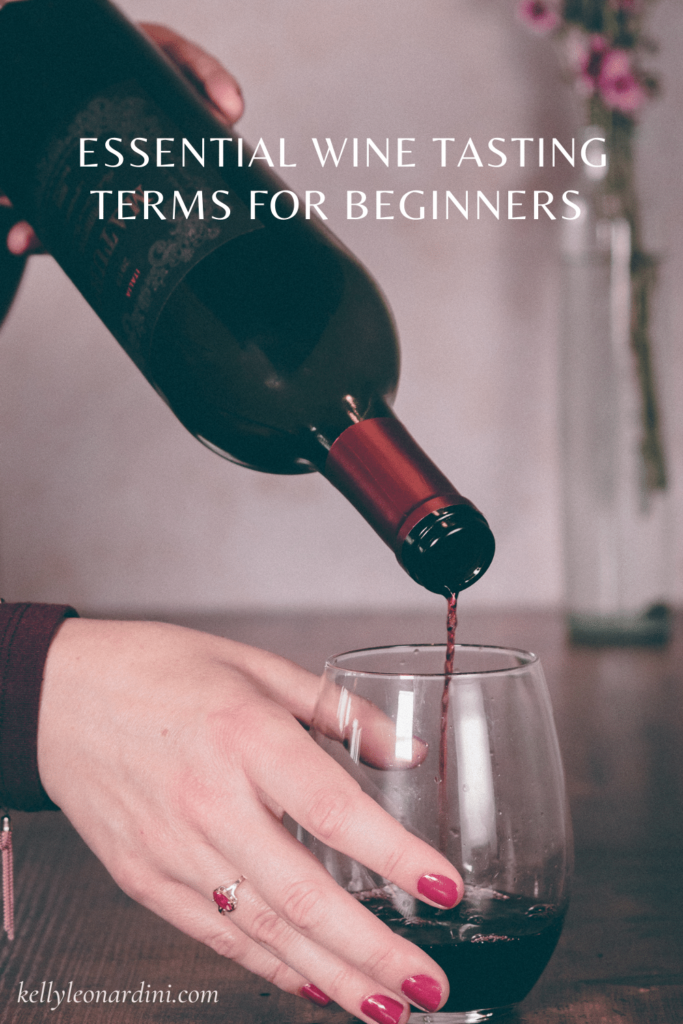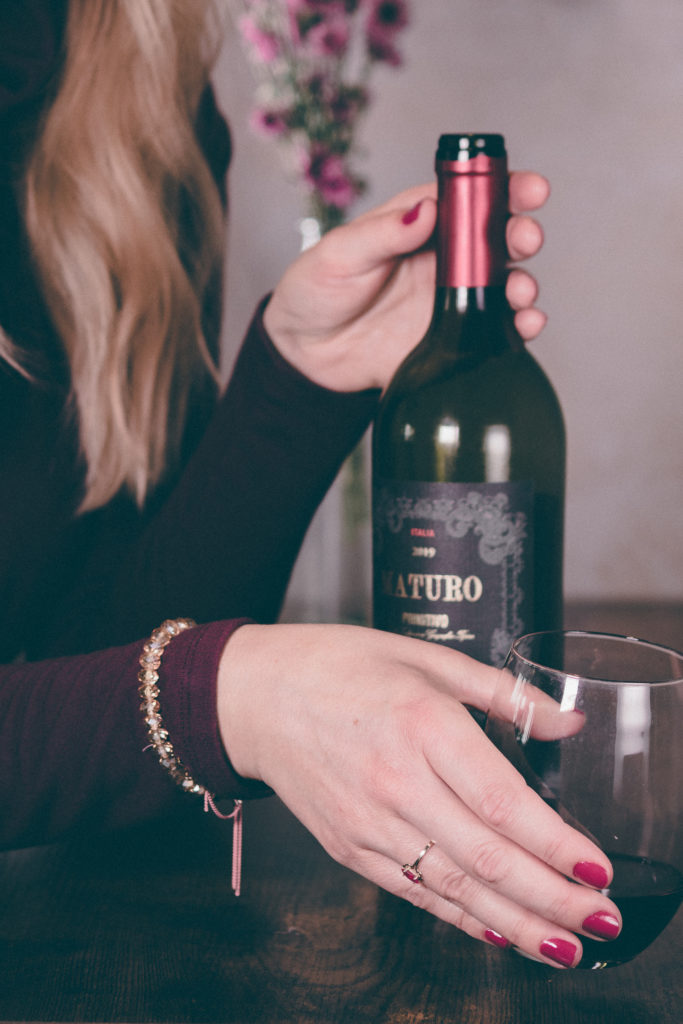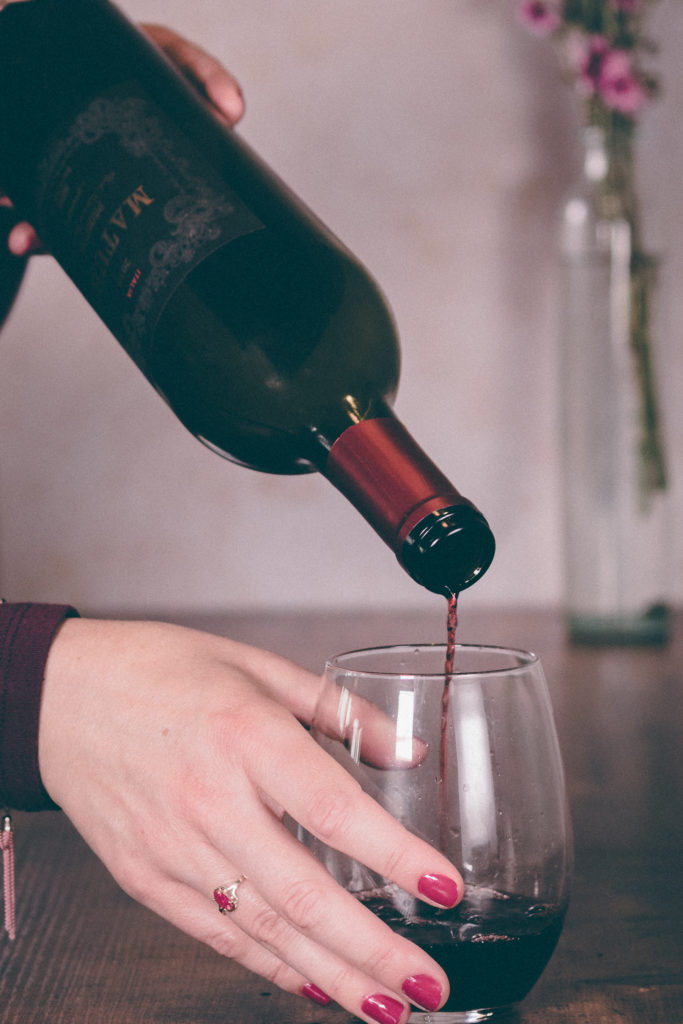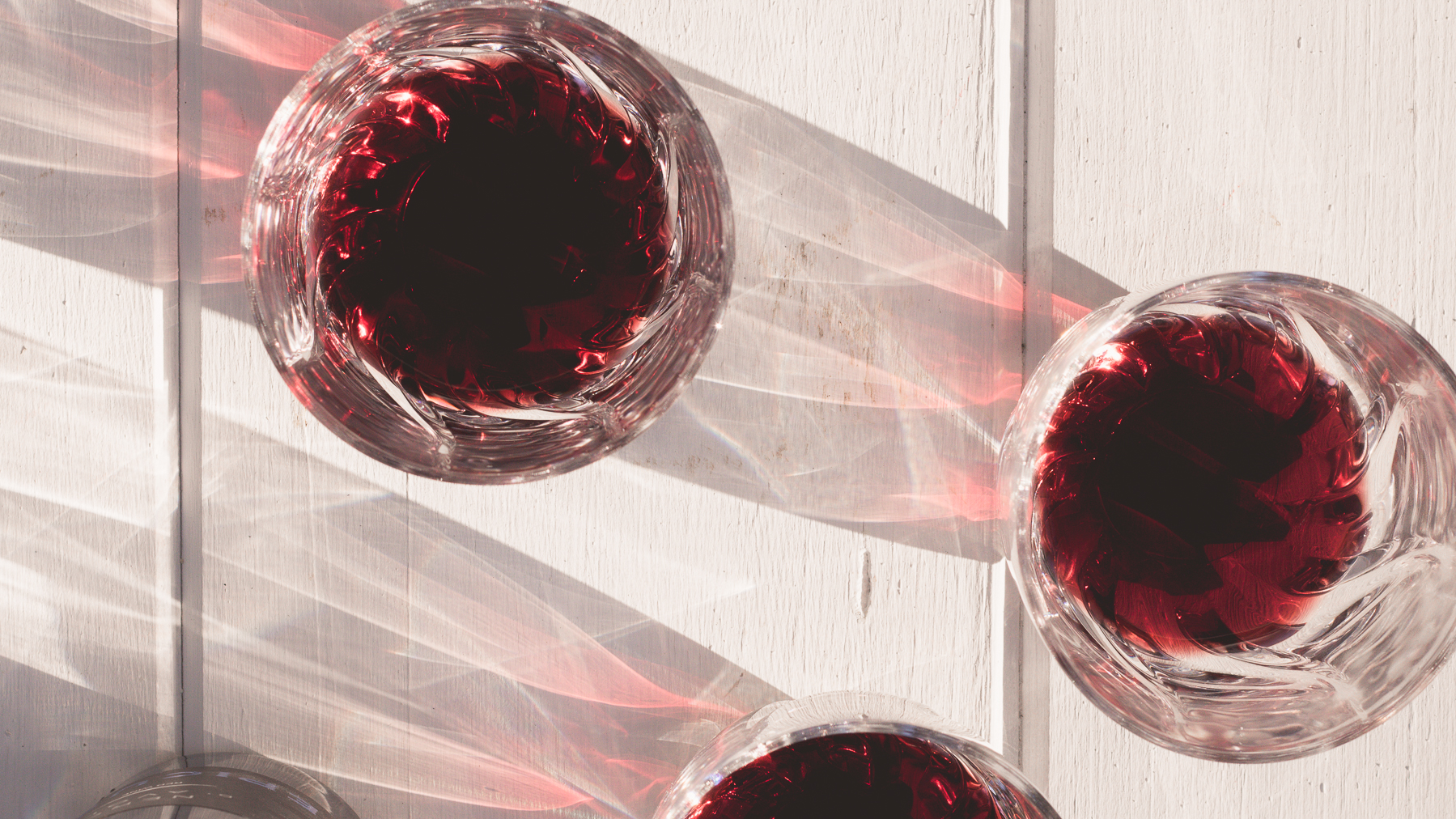January 28, 2021

Let’s “speak” wine! Like any specialty field, wine has its own specific jargon. These four essential terms, sweetness, acidity, body, and tannin, are the foundational terms for describing and understanding wine.
The terminology used in this guide comes from the standardized lexicon from Wine and Spirit Education Trust (WEST), a globally renowned wine education and certification program.
This is an introduction to these essential wine terms for those who are new to wine. These terms will help you understand wine labels and wine reviews better and give you the vocabulary to explain what you do or don’t like about a particular wine.
Wine tasting can be a meditative experience when you focus on sipping intentionally to identify all of the tastes and sensations you’re experiencing. Mindfulness is the act of coming into the present moment with all of your senses. During a wine tasting experience, we can focus on the sensations of taste and (mouth)feel with intention to train our palates to identify the characteristics of wine.

Taste
The human tongue can perceive five distinct tastes:
- Sweetness
- Acidity
- Saltiness
- Bitterness
- Umami (the meaty/savory flavor of broth, mushrooms, soy sauce, etc.)
Contrary to what we have been taught about tastes being perceived in different areas of the tongue, researchers have proven that we can perceive different tastes all over the tongue. Tastebuds activate different receptors in the brain according to the various tastes.
When describing wine, we’ll focus on two of these tastes: sweetness and acidity.
Sweetness
What is “sweetness” in wine?
Sweetness refers to how much sugar a wine contains, measured in grams per liter.
The sugars in wine are the naturally occurring ones found in grapes. In the vineyard, sunlight allows carbon dioxide and water to turn into sugar. Then, during the fermentation stage of the wine making process, yeast converts grape sugars into alcohol.
Is sugar ever added to wine?
Typically, sugar in wine is naturally occurring in grapes. However, there is a process called chaptalization in which sugar may be added to unripe grapes that are more sour than sweet, typically in areas with less sunlight. Fortunately, this process of adding sugar to grapes is illegal in Italy & California, the two regions of the world that I focus on in this blog.
What determines sweetness in wine?
A few different factors go into the sweetness of wine. It depends on the grape variety, how ripe they are, and also the winemaker. If the yeast is allowed to consume all of the sugar, then it will result in a dry wine. However, if the winemaker chooses to stop the fermentation process early, then the residual sugar will result in a sweeter wine. There’s also a fungus called botrytis, or “noble rot,” that concentrates sugar to make sweet dessert wines.
How do you know how many grams of sugar are in your wine?
Without nutrition labels on wine bottles, it’s actually nearly impossible to know *exactly* how much sugar is in your glass of wine. However, you can look for indications based on the type of wine (Wine Folly as a good chart on sugar in wine for reference).
For example, dry wines may have less than a gram of sugar, whereas dessert wines may have up to 120 grams (as much as a Coke!).
Most wines are dry; however, keep in mind mass produced commercial wine may have more grams of sugar to compensate for lower quality grapes.
How do we describe different levels of sweetness in wine?
Dry / off dry / medium / sweet
*Terminology for sparkling wine is slightly different. From driest to sweetest: extra brut / brut / extra dry / sec / demi-sec
Acidity
What is “acidity” in wine?
Acidity causes a mouth-watering sensation aka salivation. If acidity is balanced, it can be very pleasing, and that’s why vinegar or lemon can really enhance a dish if used in the proper way. In the same way, balanced acidity can add a sense of crispness and refreshing brightness to wine, and wines high in acidity generally pair well and enhance a dish. Typically, acidity is more pronounced in white wine, but it is also present in red wine.
What determines the amount of acidity in wine?
Acidity can be influenced by several factors, both natural and contributed by the winemaker. Grapes lose acidity as they ripen. Therefore, less ripe grapes will produce wine with more acidity. This can happen often in cooler climates that lack adequate sunshine and warmth to fully ripen grapes. Additionally, the winemaker can add acidity by adding tartaric acid before fermentation or subtract acidity through malolactic fermentation.
How do you describe acidity in wine?
high / medium / or low

Mouthfeel
Tannin
What is “tannin” in wine?
Tannin is often associated with bitterness, but it is actually a tactile sensation in the mouth. Tannin is felt as a drying sensation, similar to that in black tea. The good news about tannin is that it is an antioxidant. Wines high in tannin, such as Cannonau from Sardinia, are among those that are said to have the most health benefits. Sardinia is part of the “Blue Zone,” a region with the highest amount of centenarians, where Cannonau is a contributor to longevity. Tannin also acts as a preservative for the wine, allowing longer aging.
What determines the amount of tannin in wine?
Found in grape skins, seeds, and stems. Red wine has more contact with the skins during fermentation, so reds have more dominant tannins. The thickness of skin (thick: Cabernet Sauvignon, Syrah) (thin: Pinot Noir, Grenache) can also influence the amount of tannin in a wine.
Body
What is “body” in wine?
The sensation of richness, weight, or viscosity in the mouth. A full-bodied wine will feel thicker in the mouth, whereas a light-bodied wine will feel thinner.
What determines the body of a wine?
Alcohol percentage is a huge contributor to body in wine. The alcohol level is measured by ABV, or Alcohol By Volume. The ABV will always be stated on the wine bottle, and you can also note alcohol in the “wine legs.” The higher the alcohol level, the more drops of wine aka “legs” will run down the side of the glass after a swirl. Sugar and oak exposure can also contribute to the sense of body.
Body can be determined by the alcohol percentage and described as light, medium, or full-bodied:
- Light-bodied: Less than 12.5% ABV (most white wines)
- Medium-Bodied: 12-13.5% ABV (rosé, Pinot Noir)
- Full-Bodied: 13.5% (Cabernet Sauvignon, Zinfandel, Syrah, Malbec)
A good way to get a sense of body in wine is to taste a flight of white, rosé and red wines side-by-side.


Comments